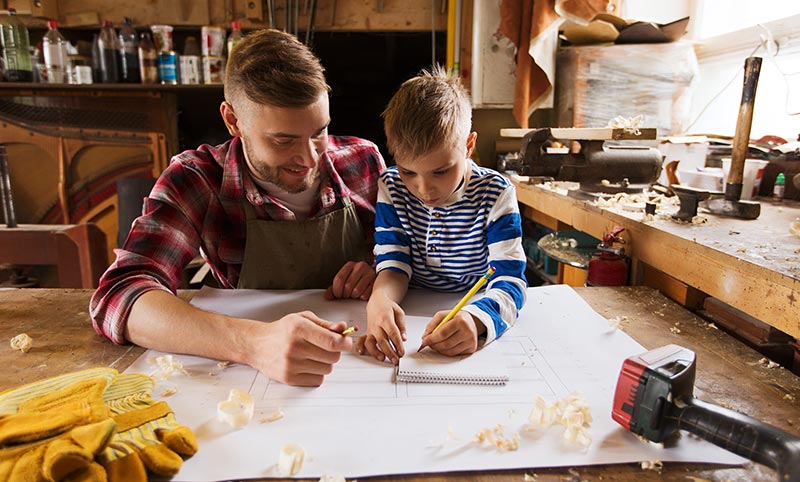
At What Age Can Children Use Tools?
Your son has been fascinated with your drill since the first time he watched you put a bookshelf together. Your daughter has been trying to swing a hammer since she was just two years old and you accidentally left it sitting after hanging a picture. Like many parents, you’ve probably found yourself wondering at what age your child can safely and appropriately use tools. While there will be some variation based on your child’s personality, motor skills capability, and responsibility, these basic guidelines will make it easier to determine whether or not your child is old enough to start helping with a few basic home repair tasks — or perhaps build a few things of their own.
Basic Tools
Basic tools like hammer and nails or a screwdriver are fairly easy for children to use from a young age. In fact, hammering is a common Montessori activity. While you might want to start the nail for a younger child — after all, you don’t want smashed fingers — your child can start learning how to use these basic tools from a very young age. In fact, these are excellent skills for your child to develop. You never know when they will need to repair something on their own, and offering them this vital skill early in life will make them much more comfortable with the building process as they get older. By age seven, your child should be able to swing a hammer with relative confidence.
More Complicated Tools
Using a hammer and nails is all well and good, but using a saw or a drill is a different matter. You want to keep your child safe. When you first break out a saw, make sure your child has the attention span necessary to keep their mind on-task — no looking away to deal with something else or sticking their fingers where they shouldn’t be. In general, a ten-year-old should be well-equipped for this level of responsibility.
A cordless drill is a more difficult tool. Built bigger, cordless drills are often difficult to control before your child’s hands are big enough to wrap around them. It’s important to make sure that the drill — and, indeed, all of your child’s tools — are the right size for their hands before they get started. Equally important, however, is giving your child the experience they need to successfully use a tool that’s part of so many different activities, from putting together a car for the pinewood derby to building a tree house. By the age of thirteen, your child should be responsible enough to handle a drill correctly.
When your kids begin to show an interest in building, take advantage of it! Offer them a toolbox of their own that has been filled with age-appropriate items that have been selected specifically for their size, age, and ability level. Teaching your child to use them properly is a vital skill that every parent should pass on.
